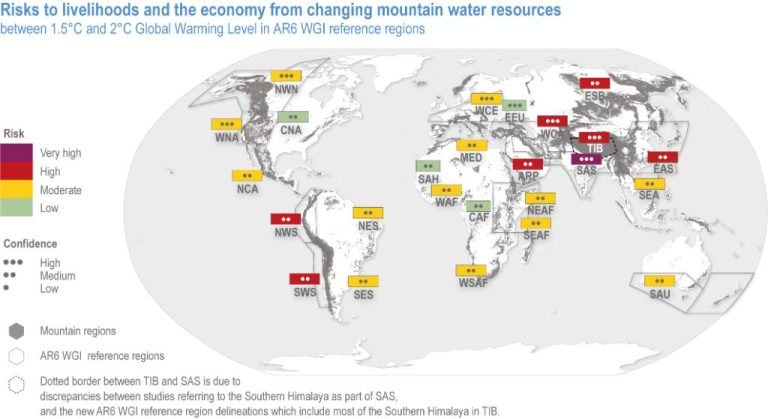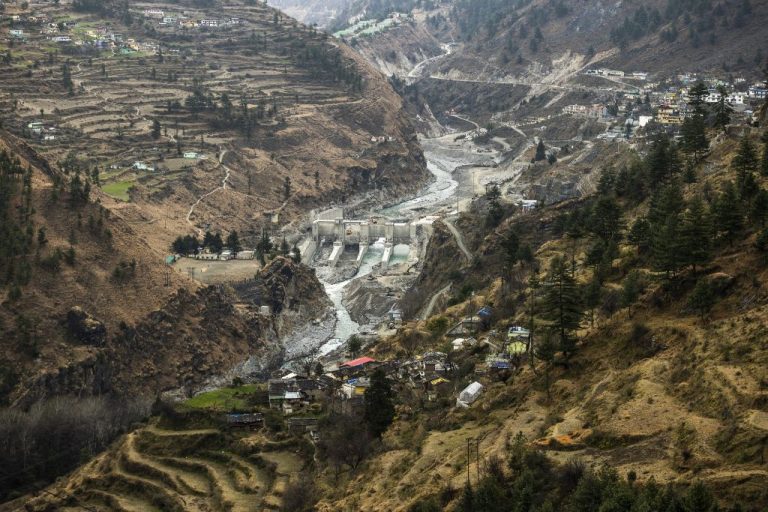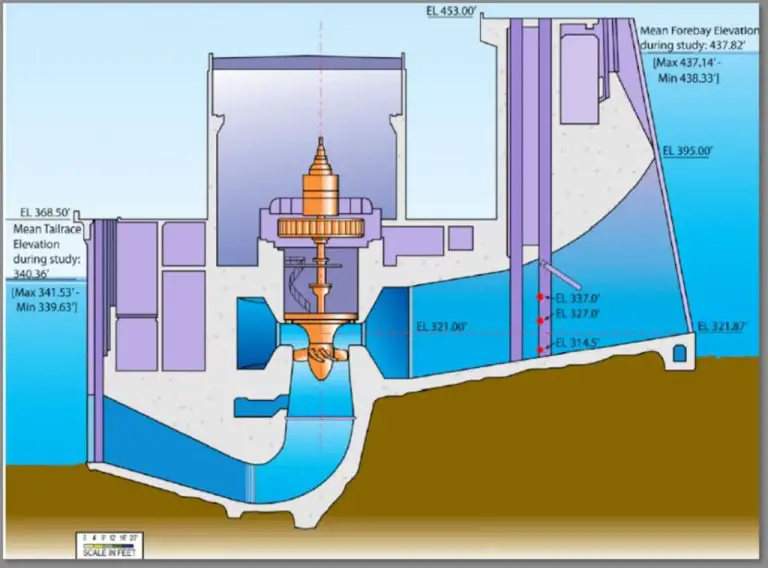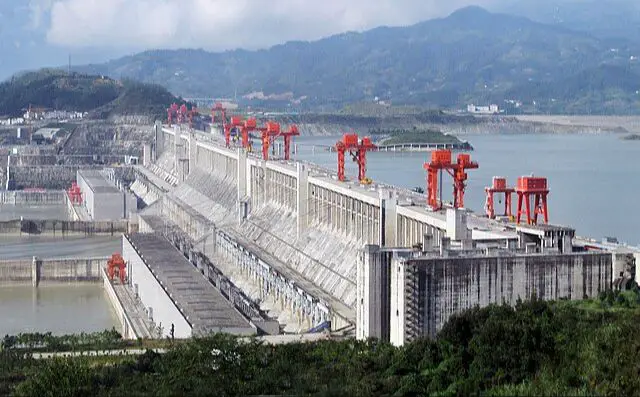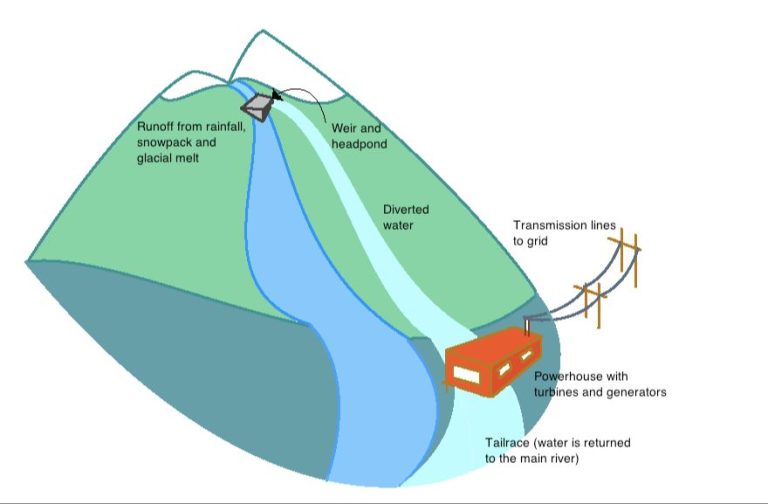What Is Hydro And How Is It Used?
What is Hydroelectric Power?
Hydroelectric power, also known as hydropower, is the process of generating electricity using the energy from flowing water. According to the National Geographic, “Hydroelectric energy is a form of renewable energy that uses the power of moving water to generate electricity” (https://www.nationalgeographic.org/encyclopedia/hydroelectric-energy/).
Hydroelectricity utilizes the potential energy created by damming water behind a large barrier, such as a dam. The force of the water flowing through the dam spins turbines which then generate electricity. Hydroelectric power is considered a renewable energy source because it relies on the water cycle, which is continuously replenished by rainfall and snowmelt.
Typically, hydroelectric power plants utilize dams and reservoirs to control water flow and direct it through turbines. The amount of electricity that can be generated depends on both the volume and flow of the water. The more water that flows through the dam and the greater the drop in elevation, the more electricity that can be produced.
History of Hydropower
The use of flowing water to generate power dates back thousands of years, with early civilizations using water wheels to grind grain. The first hydroelectric power plants emerged in the late 1800s. In 1882, the Vulcan Street Plant opened in Appleton, Wisconsin as the first commercial hydroelectric power plant in the United States. It produced 12.5 kilowatts of power. By 1886, there were 45 hydroelectric power plants in the US and Canada.
Major dam building and hydropower development took place in the early 1900s. The Niagara Falls Power Company opened in 1895, harnessing the power of Niagara Falls. In the 1930s, massive projects like the Hoover Dam and Grand Coulee Dam were built to support economic development and flood control. Hydropower expanded to provide a stable source of electricity across the country. Today, hydropower remains a major source of renewable power worldwide.
How Hydropower Plants Work
Hydropower plants use the energy from flowing water to produce electricity. Here’s how they work in more detail: https://www.energy.gov/eere/water/how-hydropower-works
A dam is built to store and control water flow. The water in the reservoir behind the dam flows through an intake and pushes against turbine blades inside the hydroelectric generator. This causes the turbine to spin, which then activates a generator to produce electricity. The electricity is then transported via huge transmission lines to homes, business, and industries.
The amount of electricity that can be generated depends on the volume of water flow and the vertical distance the water falls. Greater water flow and vertical drop can produce more electricity. Dams are often built to maximize the water volume and vertical drop.
Types of Hydropower Facilities
There are three main types of hydropower facilities: impoundment (dam), diversion (run-of-river), and pumped storage. Impoundment facilities are the most common type of hydropower plant. They rely on a dam to store river water in a reservoir. Water is then released from the reservoir through gates in the dam to spin turbines and generate electricity (1).
The more traditional impoundment facilities use dams to control the flow of water. This allows for a steady supply of electricity even in the face of fluctuating water levels. In the United States, most major dam-based hydropower plants have a generating capacity of over 100 megawatts. Hoover Dam, located on the Colorado River at the Nevada-Arizona border, is the country’s largest hydroelectric power facility with a generating capacity of 2,080 megawatts (1).
In diversion or run-of-river systems, a portion of a river is diverted through a canal or penstock to spin turbines. These facilities do not require dams for electricity generation. The kinetic energy of the flowing water spins the turbine blades. Run-of-river projects range in size from micro hydro plants producing just a few kilowatts to larger facilities generating over 100 megawatts. As they rely on the natural flow of the river, run-of-river systems provide a more fluctuating supply of electricity than dam-based reservoirs (2).
Sources:
(1) https://www.energy.gov/eere/water/types-hydropower-plants
(2) https://www.hydropower.org/iha/discover-types-of-hydropower
Hydropower Generation Capacity
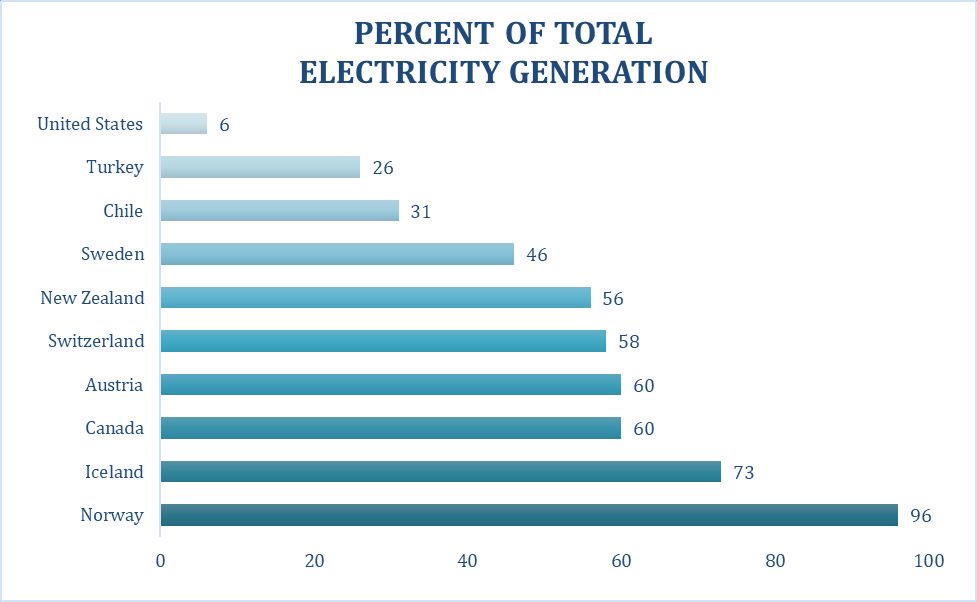
China leads the world in total installed hydropower capacity, with over 352 gigawatts as of 2022 according to Statista. This represents over 30% of the total global hydropower capacity. The United States ranks second with 102 gigawatts of installed capacity, followed by Brazil, Canada, and Russia.
However, when looking at hydropower capacity per capita, Canada produces the most in the world. With 83 gigawatts of installed capacity and a population of only 41 million, Canada generates over 2,000 watts of hydropower per person. Norway and Brazil rank second and third for per capita generation.
Countries in Asia are rapidly expanding their hydropower capacity to meet rising electricity demand. According to Yahoo Finance, installed hydropower capacity in Asia is projected to grow at an annual rate of 2.5% between 2017-2023. Major capacity increases are expected in China, India, Vietnam, Malaysia, and Nepal.
Advantages of Hydropower
Hydropower offers several key advantages that make it an important renewable energy source:
Renewable – Hydropower relies on the water cycle, which is continuously renewed by the sun, rather than the combustion of fossil fuels, making it a renewable energy source. The water cycle is an endless, constantly recharging system [1].
Reliable Baseline Power – Hydropower can provide steady, reliable electricity because it is not reliant on an intermittent resource like wind or sunlight. Hydropower can quickly go from zero power to maximum output, allowing it to efficiently meet sudden spikes in demand [2].
Long Lifespan – Hydropower facilities are extremely long-lived, with some plants still operating after 50-100 years. With regular maintenance, they can continue producing power indefinitely [3].
Low Operating Costs – Once a hydropower plant is constructed, electricity can be generated inexpensively compared to fossil fuel plants. Fuel costs are zero and maintenance costs are low.
Disadvantages of Hydropower
While hydropower is a renewable and low-emission energy source, it also has some drawbacks that need to be considered:
High Upfront Costs: Building large-scale hydropower projects requires substantial upfront investments. Constructing a dam and power plant can cost billions of dollars, and projects often take many years to complete (Source).
Impact on Fish Migration: Dams present an obstruction for migratory fish species trying to swim upstream to spawn. Fish ladders and elevators can help, but often are not 100% effective. This can negatively impact local ecosystems and commercial fishing industries (Source).
Drought Sensitivity: Hydropower output can fluctuate based on water supplies. During periods of drought, reservoirs may shrink and be unable to generate as much electricity. This can require supplementing with other forms of energy generation.
Habitat Loss: The reservoirs created by dams flood large areas that were formerly valleys, forests, and mountainsides. This habitat destruction impacts biodiversity and land use for human communities (Source).
Major Hydropower Projects
Some of the largest and most famous hydroelectric dams in the world include:
Three Gorges Dam (China)
The Three Gorges Dam on the Yangtze River in China is the world’s largest hydroelectric power station in terms of installed capacity (22,500 MW). Construction began in 1994 and was fully operational by 2012. The dam is 2,335 meters long and 185 meters high. While providing important flood control and electricity generation for China, the project was controversial for its environmental and social impacts, including relocating over 1 million people and inundating hundreds of villages, factories, and archaeological sites.1
Itaipu Dam (Brazil/Paraguay)
The Itaipu Dam on the Paraná River bordering Brazil and Paraguay is the world’s second largest hydroelectric power station, jointly owned by the two countries. With an installed capacity of 14,000 MW, Itaipu supplies 17% of Brazil’s and 90% of Paraguay’s electricity needs. Construction was completed in 1991 after 8 years with a cost of US$20 billion. The dam is 8km long and 196m high. Environmental concerns were raised over habitat loss and altered river dynamics downstream.2
Grand Coulee Dam (USA)
The Grand Coulee Dam built on the Columbia River in Washington state is the largest hydroelectric power producer in the United States, with a total generation capacity of 6,809 MW. Construction began in 1933 during the Great Depression and was completed in 1942. The concrete gravity dam is 168m tall and 1,592m long. Lake Roosevelt was created behind it, becoming the largest reservoir in the US. The dam brought irrigation, industry, and development to central Washington state.
Hoover Dam (USA)
The Hoover Dam across the Colorado River bordering Nevada and Arizona is an arch-gravity dam that was built between 1931 and 1936. With an installed capacity of 2,080 MW, it provides valuable water storage and hydroelectric power to the Southwest US. The dam measures 221m high and 379m long. Major environmental impacts included the loss of Glen Canyon behind the dam and effects on native fish populations. The dam created Lake Mead, the largest US reservoir.
Future of Hydropower
The future of hydropower is promising as energy demands rise globally. While most major river systems in developed countries have already been tapped, there remains potential for expansion in some regions such as Asia and South America. According to the Department of Energy, the vast majority of growth in the United States will come from retrofitting existing facilities and adding power at non-powered dams.
Existing hydropower facilities, many built over 50 years ago, can benefit from equipment upgrades and modernization. By replacing outdated machinery like turbines and generators, the same amount of water can produce more electricity. Reservoir and dam enhancements may also boost output. Environmental mitigation retrofits like adding fish ladders can make relicensing easier for continued operation.
New large hydropower projects face greater hurdles today, but smaller run-of-river designs are gaining interest. These projects place facilities directly within the river flow, eliminating large reservoirs. Run-of-river generates power from the natural flow of water without dams for storage. This smaller scale and lower impact approach has advantages, yet output depends on seasonal river flows.
Conclusion
In summary, hydropower is an important and historic source of renewable electricity generation globally. By utilizing the natural movement of water to turn turbines, hydropower provides a reliable baseline supply of electricity in many parts of the world. Hydropower plant designs vary widely, from massive dams and reservoirs to simple run-of-river systems. While growth in hydropower capacity has slowed in developed nations, it continues to expand in the developing world. When implemented thoughtfully, hydropower can provide clean, affordable electricity for decades.

